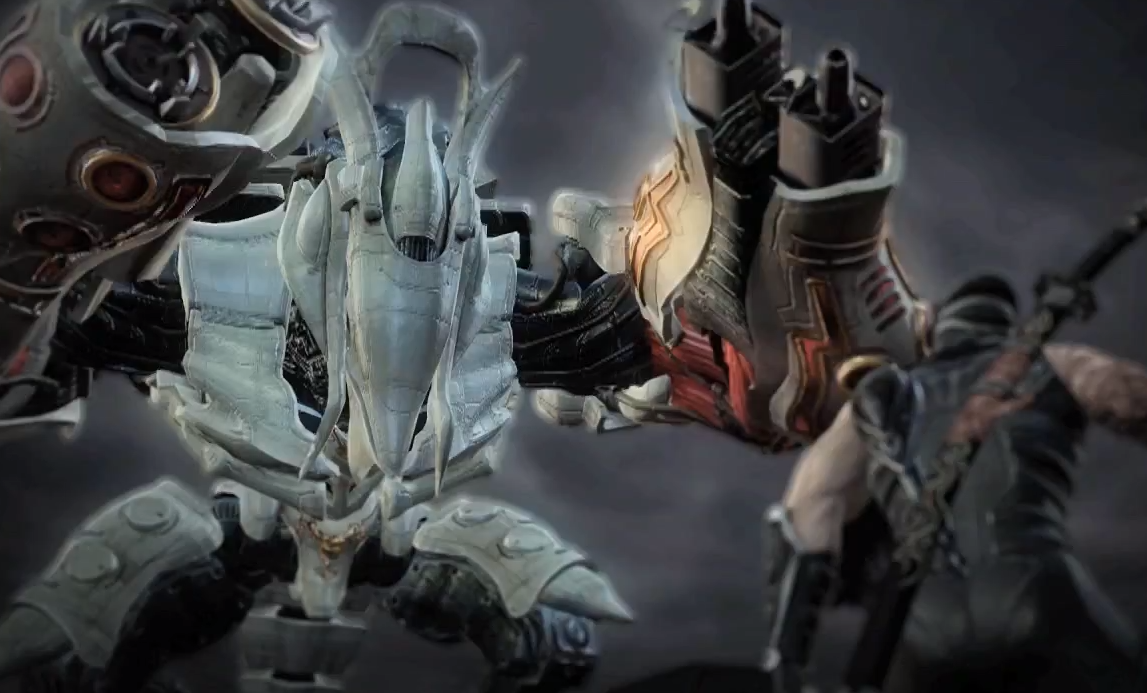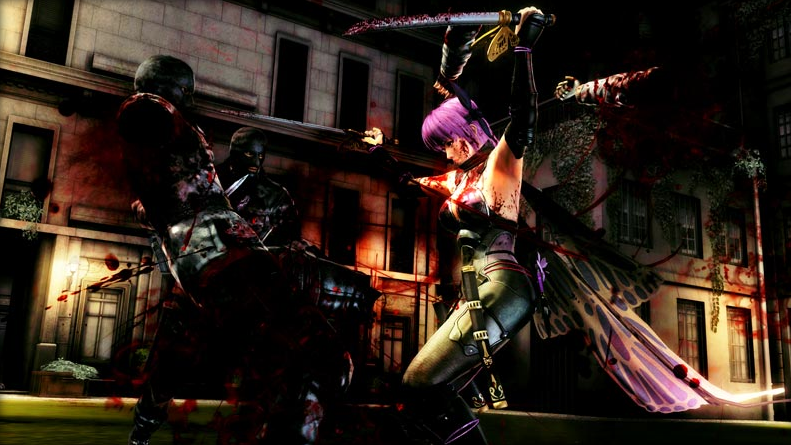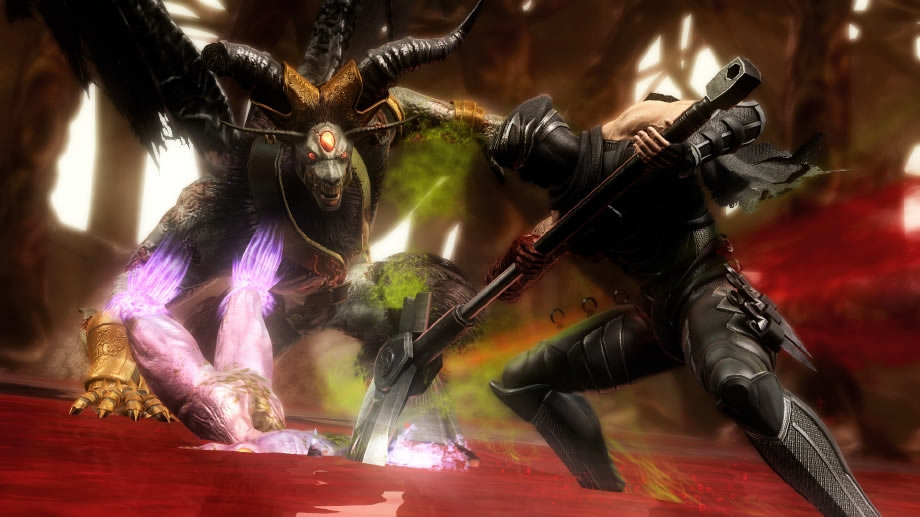Never have I seen a studio retool a game so fast and so much that it has become a night and day difference to its original, and have it launch with a new console to boot. But that is exactly what Team Ninja, alongside Nintendo this time, did with Ninja Gaiden 3: Razor’s Edge. Released a mere six months after the mess that was Ninja Gaiden 3, did Team Ninja bring this series back to life or was it beyond repair?
Like the Ninja Gaiden Sigma games on PS3 and Vita, Razor’s Edge is an enhanced upgrade of an older Ninja Gaiden. However, unlike the Sigma games that only add minor portions of an already complete game, this Wii U installment changes nearly everything from difficulty to core gameplay elements in addition to including new elements. The reason for the significant modifications to Razor’s Edge is because the original Ninja Gaiden 3 on Xbox 360 and PlayStation 3 were nothing less than an insult to the series. From dumbing down combos to meaningless quick-time events to cutting its trademark gore to being terribly easy, Ninja Gaiden 3 was a complete disaster in nearly every way. It seemed Team Ninja took the complaints to heart when crafting Razor’s Edge since many of those negative elements were consequently redesigned.
The addition of gore in Razor’s Edge is particularly interesting because it didn’t just add the ability to amputate and decapitate enemies with a flick of the sword, it helped tweak the overall gameplay. Enemies without a limb can readjust their strategy and become suicidal, becoming extremely dangerous in large fights. However they are the easiest to kill since Ryu can stylishly kill them with the press of a single button. This give and take relationship with dismemberment makes the game less like a mindless hack ‘n slash and makes the player contemplate during hectic brawls, especially given the game’s difficulty.
While modern installments of stylish action games like Ninja Gaiden and Devil May Cry added easier difficulties to allow a larger audience to enjoy a genre originally patroned exclusively by gaming masochists, Ninja Gaiden’s Wii U debut throws that notion out the window. Razor’s Edge, even in its easiest difficulty, is made only for those who want, and can handle a challenge. For example, Ryu’s health is only regained after each battle against waves of solders, demons and other monsters; and each hit penalizes the amount he can regain until the player reaches a save point. This aspect can be fun since it makes the player play defensively and strategically, but it can make those last areas from a level’s final save point to the boss incredibly stressful and frustrating. Some bosses took me, personally, over thirty tries to defeat due to factors such as a boss’ incredible amount of life, the damage they deal, and/or the low amount of health I walked into the fight with due to damage sustained prior. Ninja dogs proceed with extreme caution - you have been warned.
Team Ninja not only fixed the gameplay of the Wii U version of Ninja Gaiden 3, they also added some exclusive content. Like the Sigma re-releases before it, Ayane makes a return to extend the main campaign with her own missions. Characters can also upgrade their moves, health, and weapons between fights like in the previous Ninja Gaidens. On top of that, the game has added the ability to play chapters of the campaign as downloadable characters such as like the returning Momiji from Ninja Gaiden: Dragon Sword and now Kasumi from Dead or Alive, a character heavily requested from fans.
In addition to co-op, Ninja Gaiden 3 retains its 8-player competitive online multiplayer from its Xbox 360/PS3 versions, if you are able to use it. I say that because the majority of gamers that own this title don’t care about its online multiplayer, its lobbies are empty even on weekend nights where online traffic is usually higher. This isn't to say that the multiplayer isn't emjoyable though. Players can co-op online with a friend or stranger to take on various waves of enemies in the “Ninja Trials” mode, either as a player-created ninja you would use in deathmatch or as Ryu and Ayane. The created ninjas for the online modes can be upgraded with new looks and abilities after gaining experience in matches ala shooters in a futile attempt to try to “modernize” the series.
The game can be played either with the Gamepad or a Wii U Pro Controller and both controllers play equally well, so it’s a matter of preference on your end. I played with the Gamepad mostly since it thankfully doesn’t add any gimmicks to the experience save for streaming the game off the Gamepad or having a move list when you’re playing off the TV. It’s actually uplifting that some Wii U games don’t try to use the Gamepad in weird ways that it makes the player plop $50 on a Pro Controller because they just want a standard console experience. However if you have both controllers, you have the option to stream the game off the Gamepad and still play with a Pro Controller, an extremely nifty feature that many Pro controller-enabled games take advantage of.
Ninja Gaiden 3: Razor’s Edge is easily the definitive version of Ninja Gaiden 3, but it is far from a pillar of the genre. Many problems from the original version still seeped through this remake such as its less-than-stellar framerate, linear level design, and a lack of consumable items like health potions. Above all else, its lousy story about Ryu’s arm becoming cursed by some alchemist terrorist remains intact.
Razor’s Edge is definitely a different experience to the stylish action genre. While inferior to the 2004 Ninja Gaiden on Xbox as well as other recent competitors like Devil May Cry 4 and Bayonetta, this reboot did add some good new ideas for Team Ninja to refine while hopefully remembering what made Ninja Gaiden succussful in the first place. Despite some busted ideas and a mind-numbing production process, Razor’s Edge is not a bad experience for those who feel masochistic and are eagerly waiting for Nintendo’s next attempt in the genre with Platinum's Bayonetta 2.